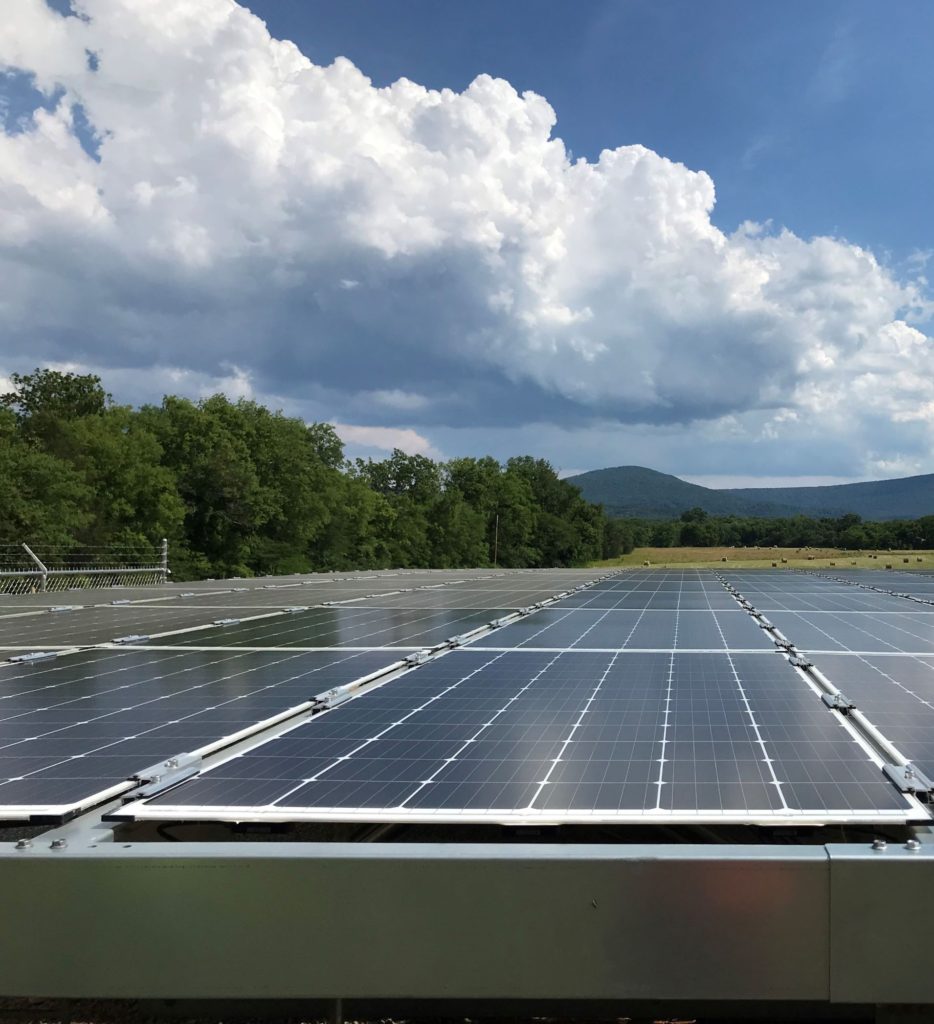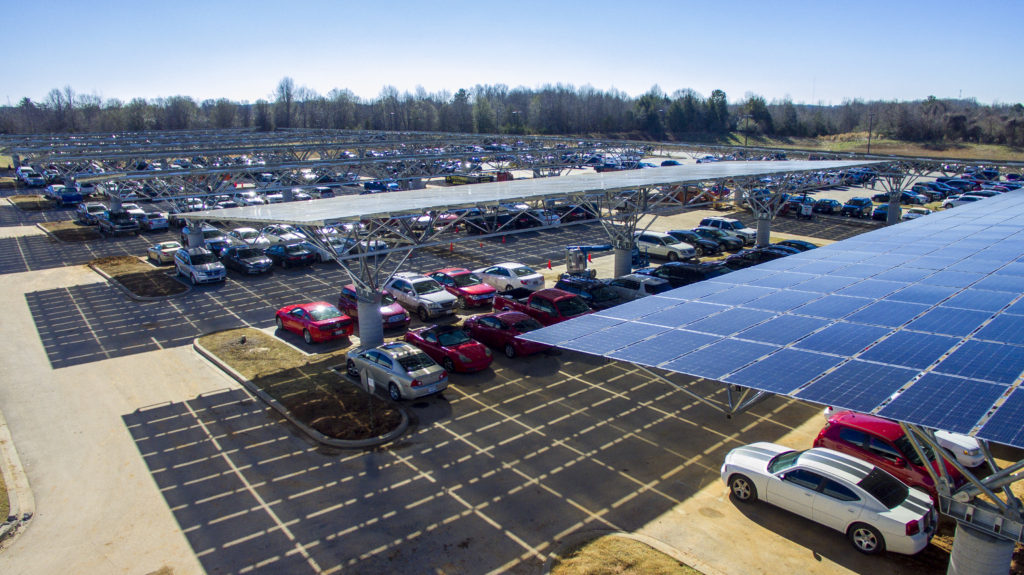As the cost of bifacial modules has fallen and installations have grown in the last five years from 97MW of installed worldwide capacity in 2016 to almost 9 GW in 2019, our business development team is receiving increasingly more requests to engineer our solar canopies for bifacial panels. We thought it would be helpful to share about the basics of bifacial panels and carports and the main drivers behind their pairing – aesthetics and increased production.
The superior aesthetics of bifacial panels with our carports cannot be understated. The open and airy feel underneath our architecturally unique canopy systems is different from other carports in the commercial and industrial space. Our carport structures are very tall. They range from 16’ to 25’ clearance at the top of the panels. The height of our canopies allows for conversion of ambient light underneath the modules to produce more energy.
After a canopy system was completed for AVX Corporation, their senior engineer, Armen Zaddorian, shared, “I really like the height of the system. Everything is really open. It’s really minimal, really clean. Not only are you saving energy and producing energy, you’re saving the planet as well. Everybody loves it. It looks great!”
Bifacial Panels 101
The top side of bifacial panels work in much the same way as traditional panels. The difference between traditional panels and bifacial panels is that bifacial panels also convert ambient light from the underside of the panels into electricity, allowing individual panels to produce up to 15-20% more output. The back glass layer has the same transmitting effect as that of the front surface, maximizing the energy generated by bifacial cells.
In one study, Trina Solar compared the power generated by a standard module, a bifacial module which has two back rails covering portions of the back of the module, and a bifacial module racked to avoid any backside shading. Over a period of 7 months, the bifacial module with no backside shading produced 6.94% more energy than the standard module and the module with backside shading produced 3.89% more energy.

Carport Systems + Bifacial Panels
The additional height and space under a carport system enables more ambient lighting to reflect on the panels. Per the Trina study referenced above, to take advantage of the additional ambient lighting, it is important to have the panels’ cells free of back shading from the racking system. When using bifacial panels with QuadPod solar canopies, we orient the panels in portrait mode, and our purlins run along each panel’s frame; the solar cells are completely free of the purlins’ shadow.
Reflective surfaces below the panels can further increase the yield from ambient light. Trina conducted a study of power gains at different albedo levels and discovered the following percentage of power gains: painted white – 24.6% gain over a monofacial module with the background painted white, sand – 11.81% gain, and grass – 6.7% gain. Other studies prove that white concrete, snow and ice also have very high albedo.
We work with our customers and site owners to determine if adding a reflective coating to the parking surface underneath the array is feasible for their project site. As demonstrated in Trina’s study, adding a reflective coating to parking surfaces increases power gains. Manufacturers, such as GAF, supply asphalt and concrete pavement coatings in many colors. These coatings increase reflective light and reduce the heat island effect. Both positively impact the ambient temperature of the panels as well as the facility overall. Dependent on several factors, an average of 33% of the cooling portion of an energy bill may be saved if the external temperature can be reduced by 10°F (6°C).
What about snow management?
As stated above, bifacial panels collect and convert solar energy from both the modules front and backsides. During and/or after snow events the backside becomes the primary collector surface and sustains partial electrical current flow. The backside energy collection serves as a heat supply to melt accumulated snow. By deploying bifacial panels in an elevated, low angle architecture the snow on the panels is managed by backside heating and natural solar irradiation. Empirical studies from root-top applications with inferior back-side view angles compared to our architecture have found snow melt accelerated by 60%.
Conclusion
Bifacial installations are predicted to account for 17% of the global market of solar panels in 2024. As these panels become more prevalent and increasingly available across the solar industry, we will continue to document our best practices with bifacial panels and carport systems. We are working to design a development strategy for these best practices and will share it when it is complete. In the meantime, please reach out to us if you have questions or want to share your own findings and best practices. You can reach us at 404-536-5787 or info@questrenewables.com.
Resources:
Trina Solar, Duomax Twin – Best Practices White Paper
